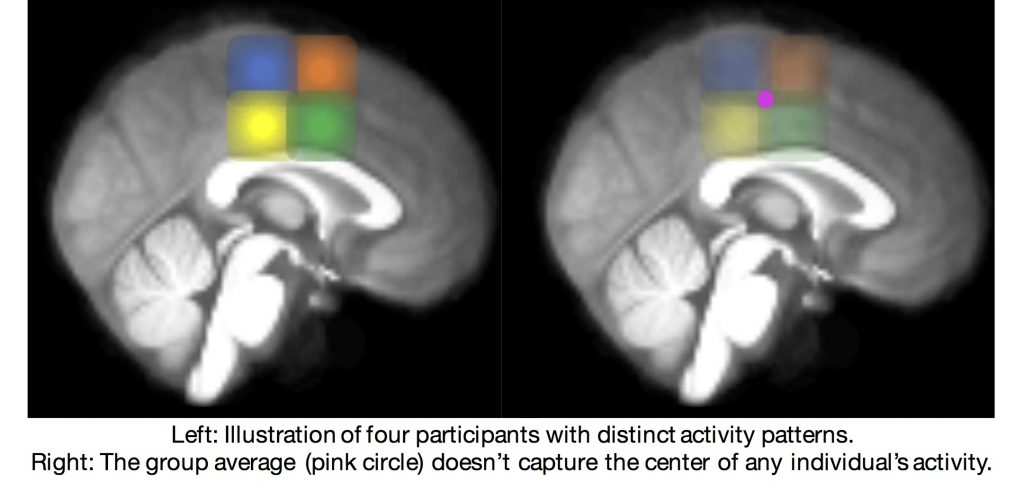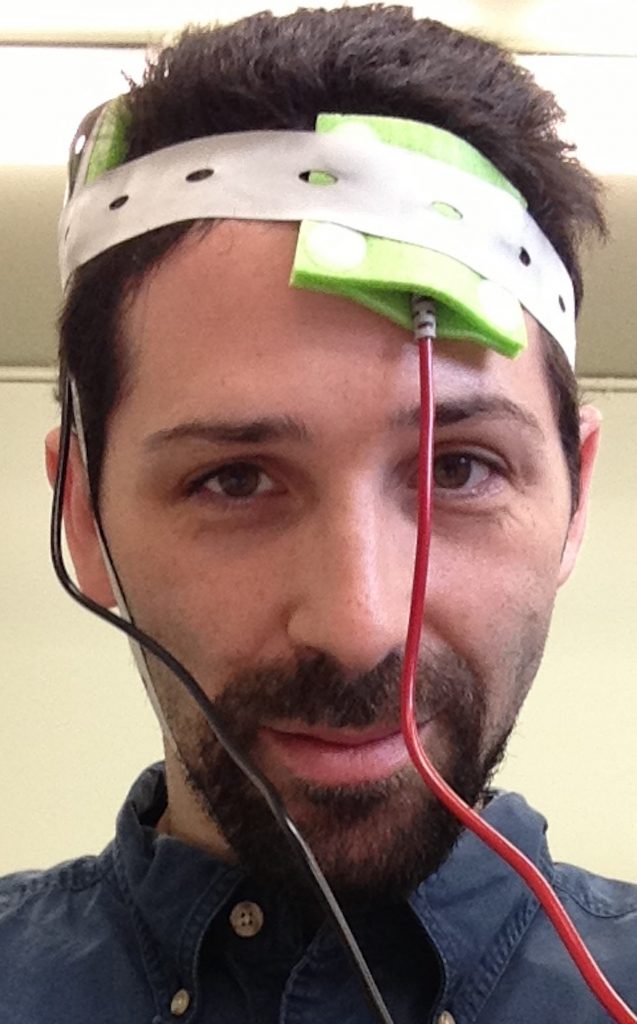Benjamin C. Kinney is a speculative fiction author and SFWA Associate Member whose writing touches on themes of science and faith, the human mind and the inhuman mind, and where these four intersect. Kinney is a pen name, to differentiate his sf from his nonfiction work. He is a neuroscientist currently working in St. Louis. His research interests include how the brain changes after amputation, and how handedness interacts with (and changes during) rehabilitation.
By Benjamin C. Kinney: Technological advancement has driven our understanding of neuroscience since at least 1887, the year when the Golgi stain allowed scientists to identify individual cells in the nervous system. As decades passed, the forefront shifted. Tissue stains and anatomical dissection were displaced the oscilloscope, patch clamp, and neuromodulator drugs. Nowadays, scientists can scan and manipulate human brains – but this technology isn’t limited to university laboratories. You can get a magnetic resonance imaging (MRI) scan at any major hospital, or order a brain modulation rig delivered to your home. As neuroscience technology becomes a part of our everyday lives, it’s more important than ever to understand what it can do – and what it can’t.
The history of brain modulation is the history of human civilization. Beer is over 10,000 years old, possibly predating bread as the original driver of agriculture. These days, fermented grains remain a popular way to alter the mind, but modern drugs and electronics offer a wider array of psychoactive effects, both medicinal and recreational. My expertise lies on the electrical side of brain function, so here I’ll explain the three big new technologies modern scientists use to interact with the human brain. I won’t go into detail about how they work; you can learn that from Wikipedia. Instead, I’ll give you a neuroscientist’s insights into what these technologies can do, what they can’t, and what potential they might have in a science fictional future.
Two warnings: First, links are not endorsements, of techniques or products or even data. Citations could be good examples or bad. Second, please remember these are all new technologies from the last 10-20 years. Long-term safety is unknown, though we know of neither reasons nor mechanisms that might cause late adverse consequences.
Brain Measurement – Functional Magnetic Resonance Imaging (fMRI)
How it works: fMRI measures brain activity by observing the flow of blood in the brain. Specifically, it exploits the iron atoms in the hemoglobin in your red blood cells: those cells’ magnetic susceptibility varies depending on whether or not they’re carrying oxygen. As a result, hard-working parts of the brain respond differently to a magnetic field.
Myths and Risks: MRI fields are safe, as long as you keep away anything magnetically susceptible. MRI machines will indeed accelerate such objects to dangerous speeds, but the Die Another Day (2002) clinic fight scene illustrates some misconceptions about this process. (Nobody watches James Bond movies for scientific accuracy, but it’s a good illustration.) First, objects are drawn into the center of the tube, not against the machine. Second, nobody would store metal objects in the same room as a MRI machine. That’s because of the biggest inaccuracy of all: that Bond turns on the MRI machine. MRI machines cannot be turned off! Their superconducting magnets depend on liquid helium, which evaporates if it ever gets warm. An actual magnetic-field shutdown (a “quench”) would cause hundreds of thousands of dollars of damage.
Major Problems: fMRI analysis is an extremely difficult and controversial beast. An Ig Nobel-winning 2009 study found brain activity in a dead fish, but that’s no reason to distrust current research; that study’s purpose was to illustrate the need for a now-universal statistical control. False findings are always possible in science, but there is one special danger to fMRI studies: the variability of the human brain. All of the brain’s folds and valleys and connections are unique from person to person. Moreover, each little parcel of brain real estate will have different functions at different times, except for basic sensory and motor areas of the brain. Combine that with the necessity to average data across many people, and you run into the problem illustrated below. The average might tell you nothing about anyone’s individual brain – and that problem gets worse as you measure more abstruse and cognitive things, far from sensory and motor processes, where the link between “cognitive/behavioral function” and “a single specific brain function” grows tenuous. Once a fMRI study purports to connect brain activity to political opinions, be very skeptical.
Science fiction: I can’t imagine that fMRI will still be in use in a space-opera future. It’s the best we have right now, but it’s an incredibly indirect measurement. fMRI uses magnetic fields to measure whether or not the iron atoms in hemoglobin are carrying oxygen. That provides a measure of blood oxygenation, which is related to brain blood flow, which is related to brain metabolism, which is related to neural activity. Three levels of abstraction lie between what we can measure and what we want to know. Someday we’ll develop totally new methods that skip some of those intervening steps, and at that point, fMRI will probably fall by the wayside as a tool to study brain activity.
Brain Stimulation: Transcranial Magnetic Stimulation (TMS)
How it works: TMS uses brief, powerful magnetic fields to induce an electric current in the brain, and activate (or inhibit) neurons. It can be delivered in single pulses, usually to measure connections or activate sensory or motor nerves; or in long trains involving 1-15 pulses per second for 6-40 minutes. That second method is known as repetitive TMS (rTMS) or theta-burst stimulation (TBS) depending on the details.
Myths and Risks: TMS can be slightly painful, because the magnetic fields can make scalp muscles twitch. Moreover, TMS pulses to motor areas of the brain create “spontaneous” twitches of muscles anywhere in your body. When your hand moves without your volition, it some people find it uncanny or unsettling. However, TMS is quite safe unless you have a medical condition that places you at risk of seizures. Harmless syncope (fainting) can occur rarely, but most researchers – myself included – demonstrate TMS on their own heads with casual ease.
Major Problems: Many scientific studies have shown that rTMS and TBS can modulate learning. Unfortunately, many scientific studies have also shown that rTMS and TBS cannot modulate learning. I’ve heard senior researchers advise that “you have to try ten rTMS studies before you get one that works,” which is a warning sign for false findings. It doesn’t look like TMS will help us acquire new skills more quickly, though rTMS can help with depression and possibly neuropathic pain (pain originating within the nervous system). There’s no good evidence yet for other clinical uses.
However, TMS isn’t all bunk – it has obvious effects on brain cells, as demonstrated if you stimulate motor areas of the brain. This, unfortunately, is also why TMS research is full of individual studies with false positive findings. When each TMS pulse brings noise and discomfort, it’s difficult to blind a patient to whether or not they’re getting the treatment, so there’s a strong placebo effect.
A long-term problem of TMS is its lack of specificity. If you want to pass a magnetic field through the skull and skin, there are limits (and tradeoffs) on precision and depth.
Science Fiction: TMS has a lot of room for improvement. The big technological advancement that made TMS possible is the special capacitors for rapid on/off switching of the magnetic field. (It’s the change in field that causes an electrical current, which is why the constant field of fMRI produces no such effects, even though the two methods reach similar magnetic field strengths. The MRI is always on, Mr. Bond.) In the future, we’ll have magnetic coils with novel shapes able to reach into the brain at ever-greater depth and precision. With faster coils, and a better understanding of human neural function, we might be able to dynamically match rTMS patterns with neural activity, and thus reach the elusive goal of accelerated learning.
Brain Modulation: Transcranial Direct Current Stimulation (tDCS)
How it Works: tDCS sends a weak electrical current (1-2 milliamps) across the scalp, to shift baseline voltages in the brain. Basically a nine-volt battery, a couple of sponge electrodes, and some control/safety features. Part of a larger category of transcranial electrical current stimulation (tCS or TES); everything I say probably applies to the whole category, but I’ll use the term tDCS, since that’s the form most commonly used and best-understood in today’s neuroscience research.
Myths and Risks: tDCS can produce an unpleasant burning-like sensation at the skin, but is generally safe. However, the biggest myths are on the “benefits” side. You can find claims all over the internet about how tDCS can enhance alertness, focus, learning, and sport performance. But the FDA does not regulate any of these consumer devices or their marketing claims! Despite many clinical trials, there’s no good evidence that tDCS helps with any clinical condition except possibly major depression, and there are some reports of psychiatric side effects in patients. Among home users who depart from laboratory-tested guidelines, some report a panoply of side effects. Most worryingly, learning and alertness aren’t merely dials that the brain has set too low. Changing the brain’s functional parameters would require some kind of tradeoff – and we don’t really know what that tradeoff might be!
Major Problems: tDCS has a glaring fundamental problem: it’s not clear whether it does anything to the brain. If you apply current to the scalp, most of it shunts across the scalp, and very little actually reaches the brain. However, these results remain highly controversial. Even a tiny amount of current might have an effect. The major tDCS “debunking” study was performed in cadaver brains, which have somewhat different electrical properties from live brains, yet still showed some change in current. Overall, some scientists think tDCS is entirely bunk, but others think it still has potential, perhaps at higher currents (2-4 mA).
Science Fiction: tDCS in its current form has a limited future, but I expect it’ll spawn some great technological descendants. Currents across the scalp can never have precise effects on the brain, given all the flesh and bone in the way. Such currents also may never have strong effects, since higher currents (4+ mA) can be hard to tolerate even with anesthetized skin. However, even if we can’t deliver that current now, the principles make sense. If we can find new ways to introduce weak currents across the brain itself, we may be able to induce the functional tradeoffs that suit our needs.
Discover more from File 770
Subscribe to get the latest posts to your email.





The ‘illustration of four participants with distinct activity patterns’ is the Microsoft logo turned 90 degrees clockwise. Where did this come from?
Very cool article!
An unexpected, but fun article!
John (1:44pm): the ‘four participants with distinct activity patterns’ came from twenty minutes playing around with transparencies in Powerpoint! All Microsoft logo similarities are coincidental. (It’s an illustration, not real brain-scanning data.)
Really fascinating! It’s been a long time since my undergrad days, when fMRI was the cutting edge!
A very nice article, and it turns out the author had another good article in Clarkesworld last month.